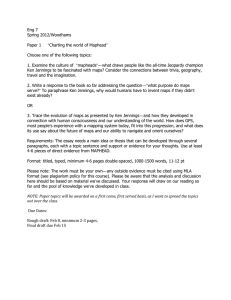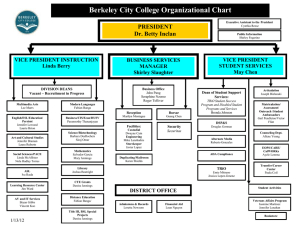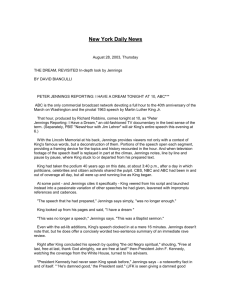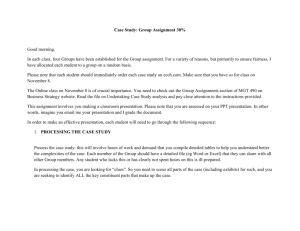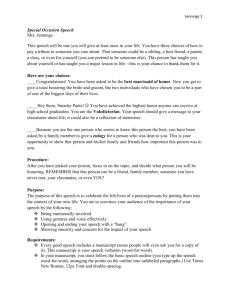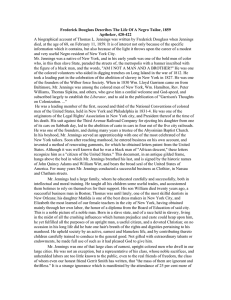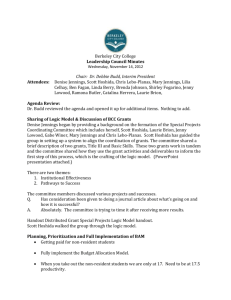Case method in strategic management
advertisement
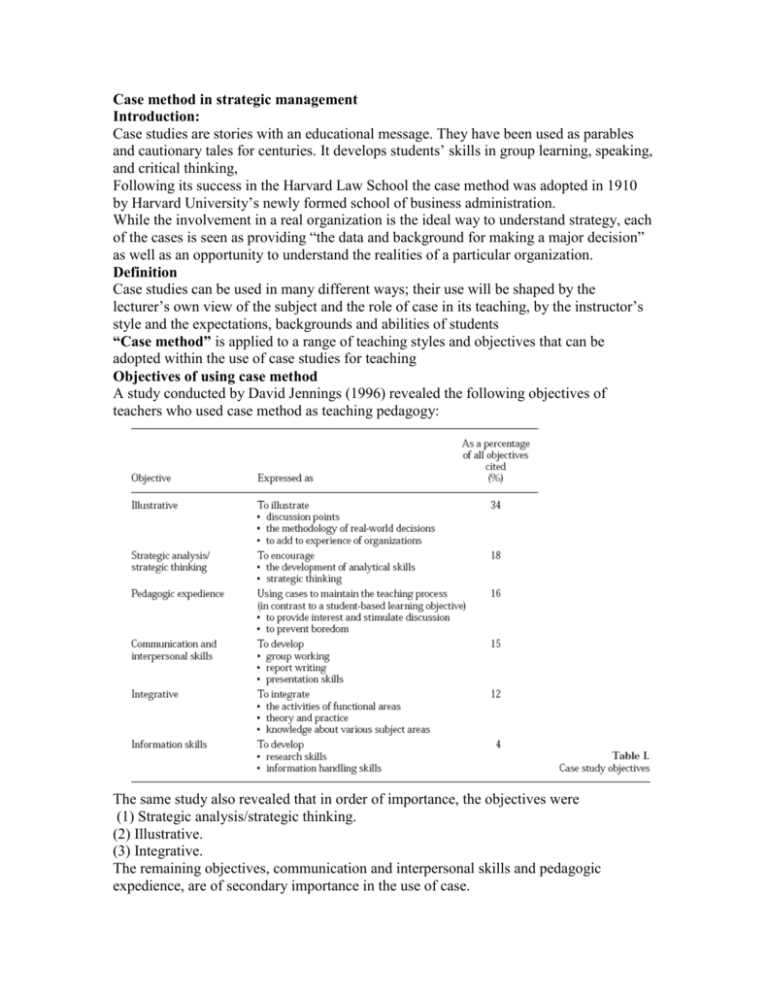
Case method in strategic management Introduction: Case studies are stories with an educational message. They have been used as parables and cautionary tales for centuries. It develops students’ skills in group learning, speaking, and critical thinking, Following its success in the Harvard Law School the case method was adopted in 1910 by Harvard University’s newly formed school of business administration. While the involvement in a real organization is the ideal way to understand strategy, each of the cases is seen as providing “the data and background for making a major decision” as well as an opportunity to understand the realities of a particular organization. Definition Case studies can be used in many different ways; their use will be shaped by the lecturer’s own view of the subject and the role of case in its teaching, by the instructor’s style and the expectations, backgrounds and abilities of students “Case method” is applied to a range of teaching styles and objectives that can be adopted within the use of case studies for teaching Objectives of using case method A study conducted by David Jennings (1996) revealed the following objectives of teachers who used case method as teaching pedagogy: The same study also revealed that in order of importance, the objectives were (1) Strategic analysis/strategic thinking. (2) Illustrative. (3) Integrative. The remaining objectives, communication and interpersonal skills and pedagogic expedience, are of secondary importance in the use of case. Effectiveness of case method The study also looked at the effectiveness of the use of case method in terms of achievement of participation of students and achievement of objectives. The results indicated that case method was associated with high student participation. The results on achievement of objectives were as follows: Problems The main problems, obstacles and difficulties encountered in obtaining and using cases are: Demands on students’ time. Scope for analysis.—may encourage a particular situation Resources.—expensive and time consuming Relevance.—lack of cases on public sector Comparison with other methods used in teaching strategic management: Typically in strategic management, teachers use a combination of methods. The use of multiple methods is associated with the fact that different methods are associated with development of different skills. The most commonly used methods are simulation (development of a proposal), and action learning (project work). In a study (David Jennings 2002), it was seen that case method and simulation were rated as best and equal. The study revealed that case method helped in identifying problems, seek and use information for problem solving, gain top management perspective and add realism to learning. Conclusion: Since cases are stories representing reality with a view to communicate an educational message, their use in teaching strategic management is seen as most appropriate. However teachers tend to use a combination of methods as supplements to use of case method. It is a common fact that everybody does use stories to illustrate the significance of a message being communicated and initiate discussion. References: 1. Jennings, David :(1996) strategic management and the case method : journal of management development , volume 15, no 9, pp 4—12 2. Jennings , David( 2002) : strategic management : an evaluation of the use of three learning methods, the journal of management development , volume 21, no 9 , pp 655—665. Annexure1: Strengths and weakness of some methods of teaching strategic management (Jennings 1996)

